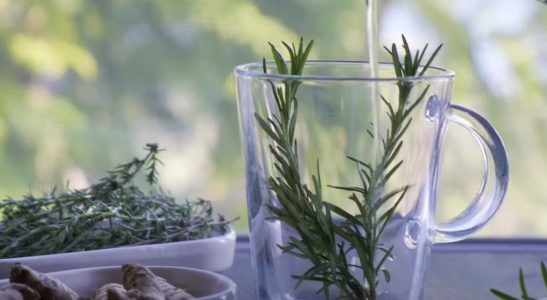How to create a tea garden at home and enjoy fresh, soothing brews
By
Veronica E.
- Replies 0
Picture this: you step outside into a fragrant garden where the air carries hints of mint, chamomile, or lavender.
You pick a few sprigs, brew a cup of tea, and settle into a cozy chair surrounded by blooms.
That’s the magic of a home tea garden—a space that blends beauty, relaxation, and the joy of fresh herbs.
It’s easier to create than you might think, and the rewards go far beyond what’s in your cup.
Whether you’re an experienced gardener or just getting started, a tea garden can turn any backyard corner into a sanctuary.

Why start a tea garden?
While store-bought tea is convenient, there’s something special about growing your own.
Freshly picked herbs and flowers taste brighter, and you know exactly what’s going into your brew.
Beyond flavor, a tea garden creates a retreat—a quiet place to read, meditate, or chat with friends.
Studies even suggest that spending time in green spaces lowers stress, improves mood, and sharpens memory.
In short, your garden can nourish both body and mind.
Also read: Don’t throw away those eggshells—here’s why your garden will thank you
Designing your garden retreat
You don’t need a large space to begin.
A sunny corner of your yard, a raised bed, or even a few pots on a balcony will do.
Keep these ideas in mind as you plan:
Also read: 7 colorful flowers to plant in August for a beautiful fall garden
Herbs and flowers to grow
Some plants are especially well-suited for tea gardens:
Also read: Say goodbye to aphids! Discover 8 plants garden experts swear by for a pest-free summer
Tips for harvesting and brewing
Pick herbs in the morning, after the dew has dried but before the heat of the day.
Use them fresh for mild flavor, or dry them upside down in small bunches.
Store dried herbs in airtight jars, away from light and heat.
For brewing, use about one tablespoon of fresh herbs (or one teaspoon dried) per cup of boiling water.
Steep for five to ten minutes, strain, and enjoy.
Also read: Unlock the secret to optimal health: Discover which tea can transform your well-being
Blending your own tea
The joy of a home tea garden is mixing flavors to suit your mood.
Try chamomile with lavender for bedtime, mint with lemon balm for refreshment, rose petals with calendula for a floral blend, or echinacea with lemongrass for immune support.
With a few simple plants, you can create dozens of combinations!
A garden that feeds the spirit
A tea garden is more than a collection of herbs—it’s a personal retreat filled with color, fragrance, and comfort.
Whether you’re enjoying a pot with loved ones or sipping quietly alone, the ritual becomes as meaningful as the tea itself.
Over time, it can become one of your favorite spots at home.
Read next: Unlock the secret to longevity with this obscure "immortality herb"—why it may be a better option than green tea!

Have you tried growing your own tea herbs, or do you have a favorite blend? Share your experiences and tips in the comments—we’d love to hear how you enjoy tea gardening!
You pick a few sprigs, brew a cup of tea, and settle into a cozy chair surrounded by blooms.
That’s the magic of a home tea garden—a space that blends beauty, relaxation, and the joy of fresh herbs.
It’s easier to create than you might think, and the rewards go far beyond what’s in your cup.
Whether you’re an experienced gardener or just getting started, a tea garden can turn any backyard corner into a sanctuary.

A home tea garden can be both a source of fresh herbs and a peaceful retreat for relaxation. Image Source: YouTube / Just Sow It!.
Why start a tea garden?
While store-bought tea is convenient, there’s something special about growing your own.
Freshly picked herbs and flowers taste brighter, and you know exactly what’s going into your brew.
Beyond flavor, a tea garden creates a retreat—a quiet place to read, meditate, or chat with friends.
Studies even suggest that spending time in green spaces lowers stress, improves mood, and sharpens memory.
In short, your garden can nourish both body and mind.
Also read: Don’t throw away those eggshells—here’s why your garden will thank you
Designing your garden retreat
You don’t need a large space to begin.
A sunny corner of your yard, a raised bed, or even a few pots on a balcony will do.
Keep these ideas in mind as you plan:
- Choose the right spot. Most tea herbs need at least six hours of sunlight daily.
- Add a seat. Place a bench, chair, or hammock nearby so you can sip and relax in the space you’ve created.
- Consider shade. While your plants may love the sun, you might enjoy a pergola, umbrella, or climbing vine trellis for relief on hot afternoons.
- Engage the senses. Birdbaths, fountains, wind chimes, and solar lights add charm and calm.
- Think year-round. Dry herbs at the end of summer so you can enjoy homemade tea during colder months.
Also read: 7 colorful flowers to plant in August for a beautiful fall garden
Herbs and flowers to grow
Some plants are especially well-suited for tea gardens:
- Chamomile: A classic for bedtime, with daisy-like blooms that are both pretty and calming.
- Echinacea: Known for immune support, this hardy flower also attracts butterflies and bees.
- Mint: Refreshing and versatile, but it spreads quickly—grow it in pots to keep it contained.
- Roses: Petals from old-fashioned or tea roses (pesticide-free) make a fragrant brew.
- Lavender: Adds a gentle floral note and thrives in sunny, dry soil. Choose culinary varieties.
- Lemon balm: Mild, lemony, and soothing for digestion, though it can spread if unchecked.
- Lemongrass: Brings a tropical flavor and doubles as a mosquito repellent.
- Calendula: Bright orange blooms that create a golden tea and are thought to have anti-inflammatory benefits.
Also read: Say goodbye to aphids! Discover 8 plants garden experts swear by for a pest-free summer
Tips for harvesting and brewing
Pick herbs in the morning, after the dew has dried but before the heat of the day.
Use them fresh for mild flavor, or dry them upside down in small bunches.
Store dried herbs in airtight jars, away from light and heat.
For brewing, use about one tablespoon of fresh herbs (or one teaspoon dried) per cup of boiling water.
Steep for five to ten minutes, strain, and enjoy.
Also read: Unlock the secret to optimal health: Discover which tea can transform your well-being
Blending your own tea
The joy of a home tea garden is mixing flavors to suit your mood.
Try chamomile with lavender for bedtime, mint with lemon balm for refreshment, rose petals with calendula for a floral blend, or echinacea with lemongrass for immune support.
With a few simple plants, you can create dozens of combinations!
A garden that feeds the spirit
A tea garden is more than a collection of herbs—it’s a personal retreat filled with color, fragrance, and comfort.
Whether you’re enjoying a pot with loved ones or sipping quietly alone, the ritual becomes as meaningful as the tea itself.
Over time, it can become one of your favorite spots at home.
Read next: Unlock the secret to longevity with this obscure "immortality herb"—why it may be a better option than green tea!
Key Takeaways
- A tea garden combines homegrown herbs with a calming outdoor retreat, offering both flavor and relaxation.
- Key design features include a sunny location, comfortable seating, decorative elements, and options for year-round use.
- Herbs such as chamomile, echinacea, mint, roses, lavender, lemon balm, lemongrass, and calendula are easy to grow and useful for tea.
- Harvesting in the morning, drying herbs carefully, and experimenting with blends are simple ways to maximize both taste and enjoyment.
Have you tried growing your own tea herbs, or do you have a favorite blend? Share your experiences and tips in the comments—we’d love to hear how you enjoy tea gardening!






